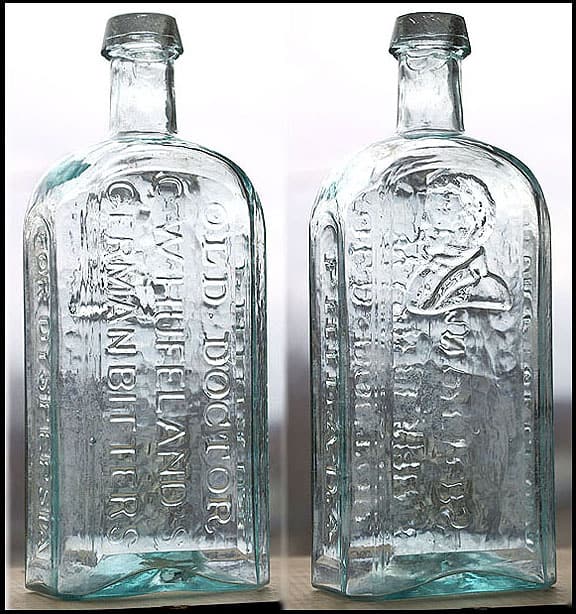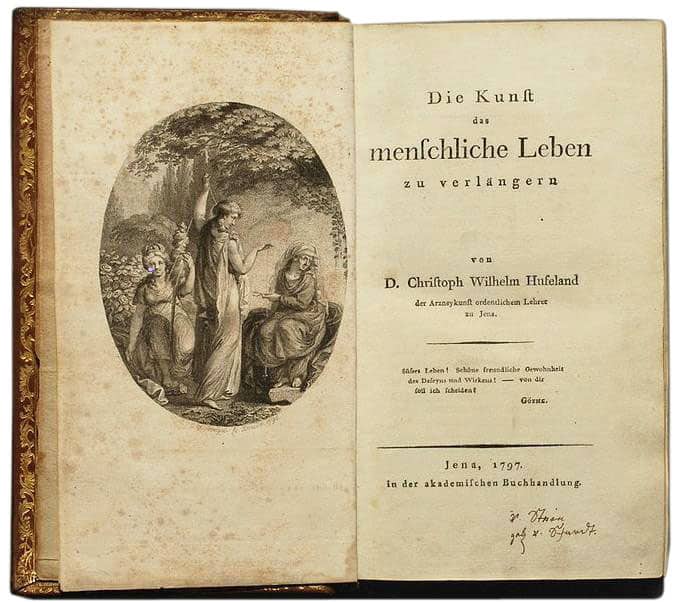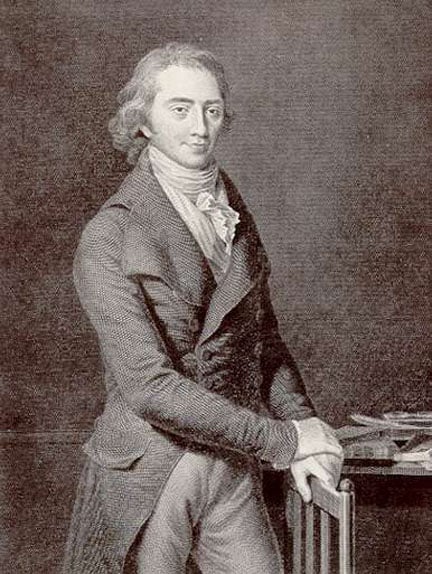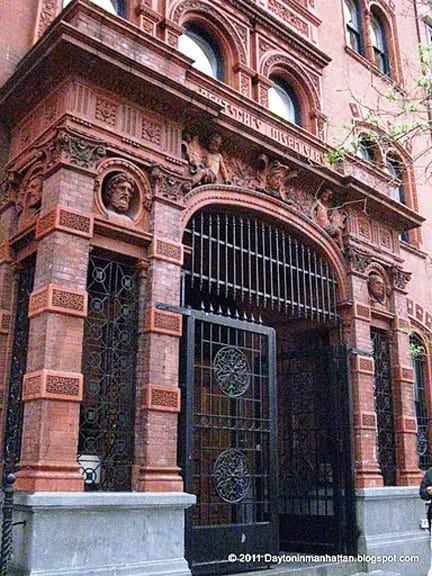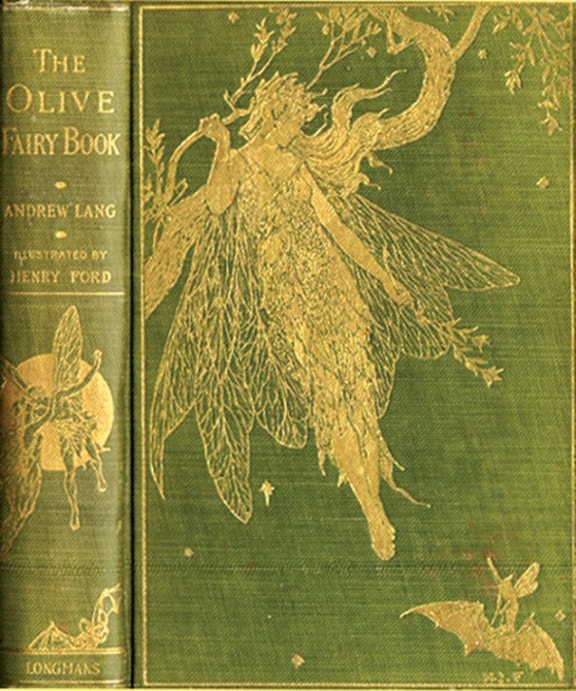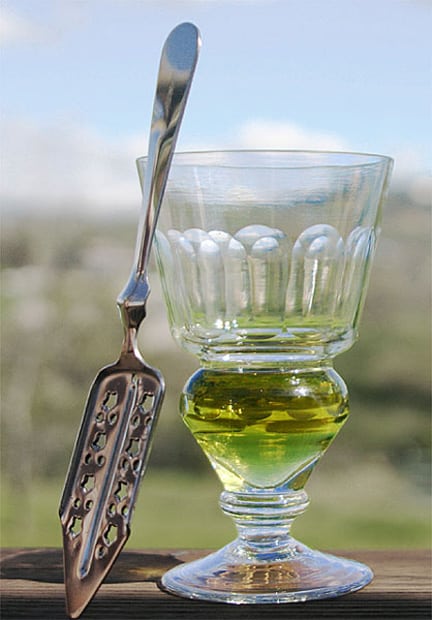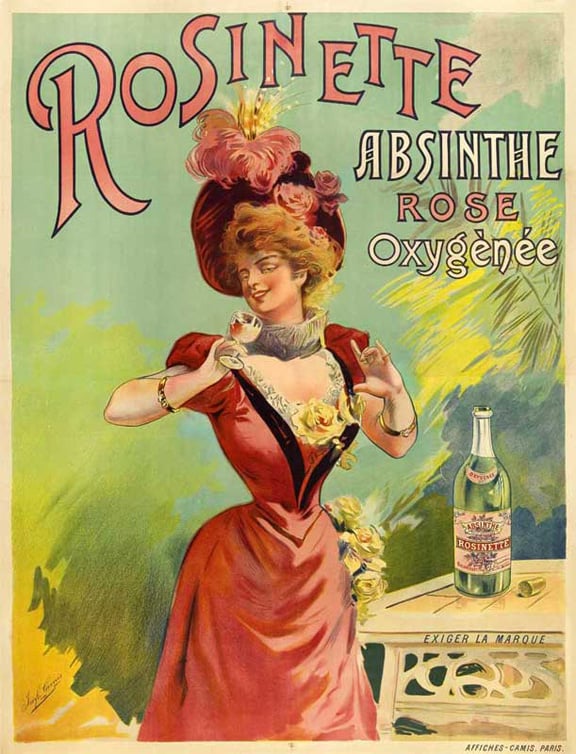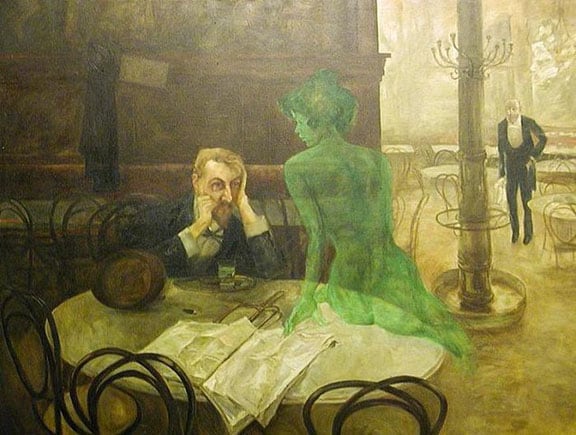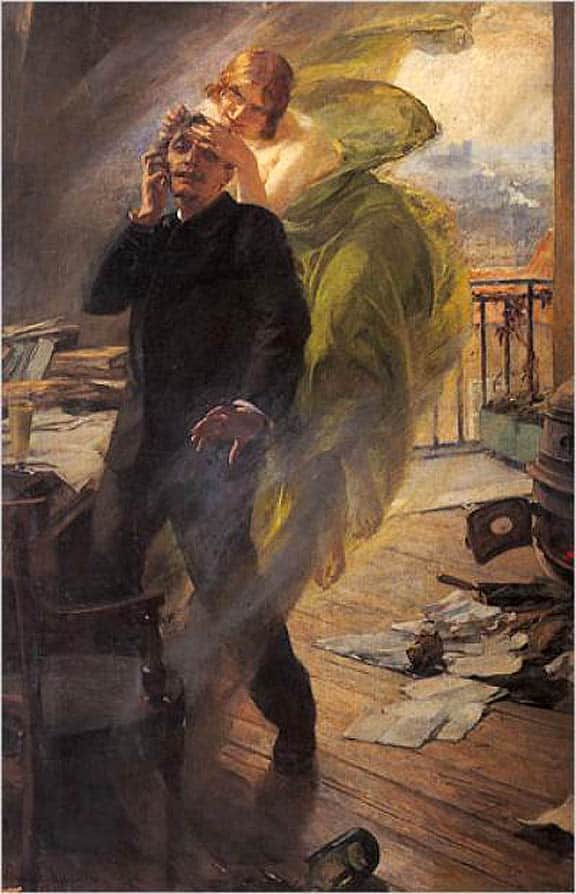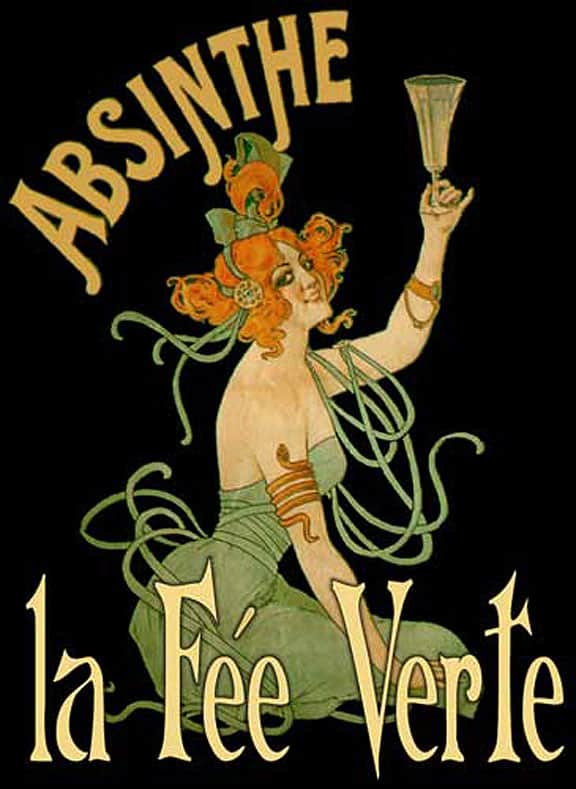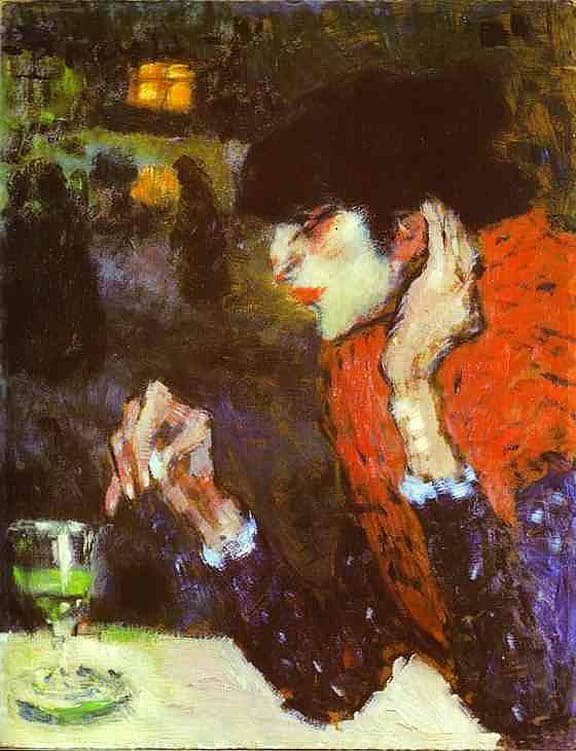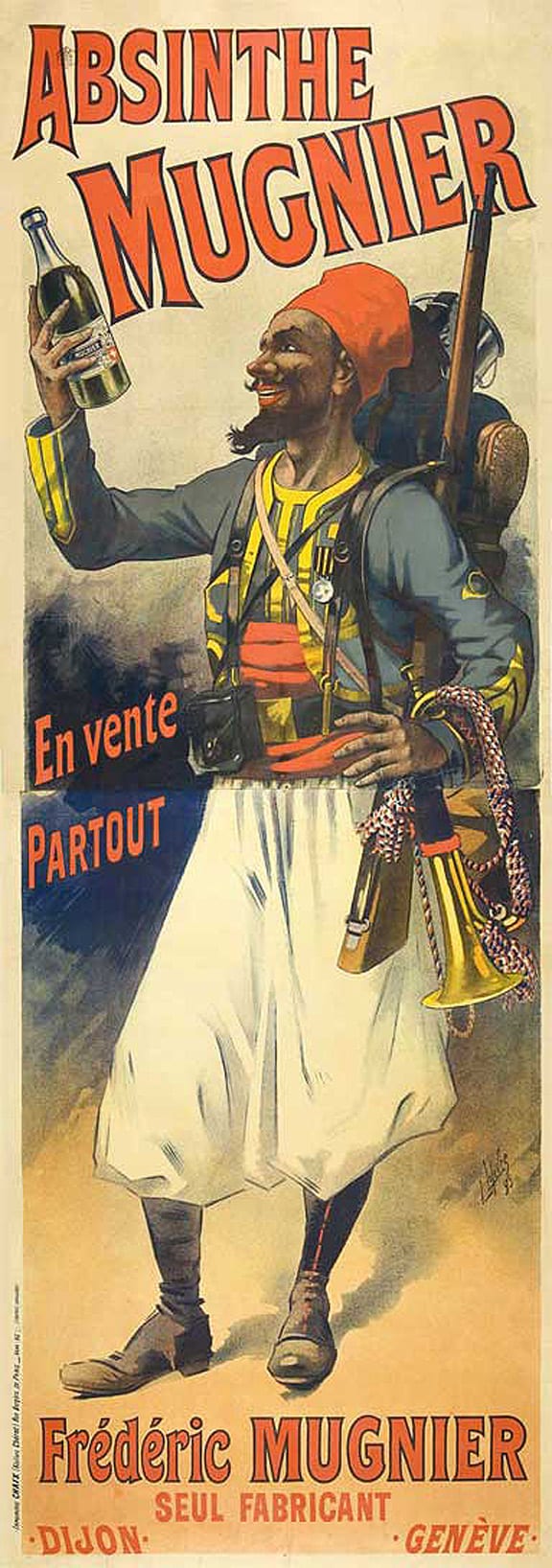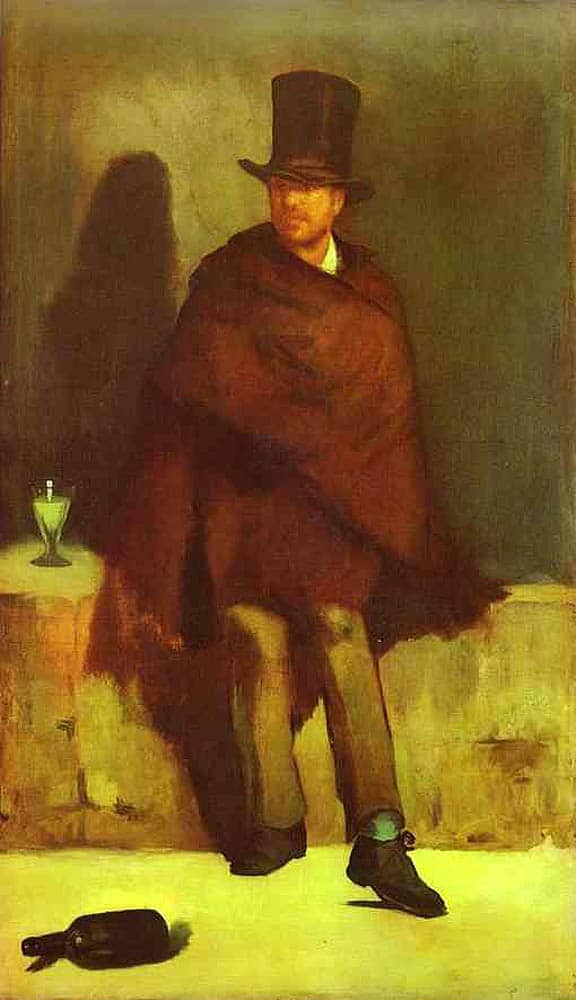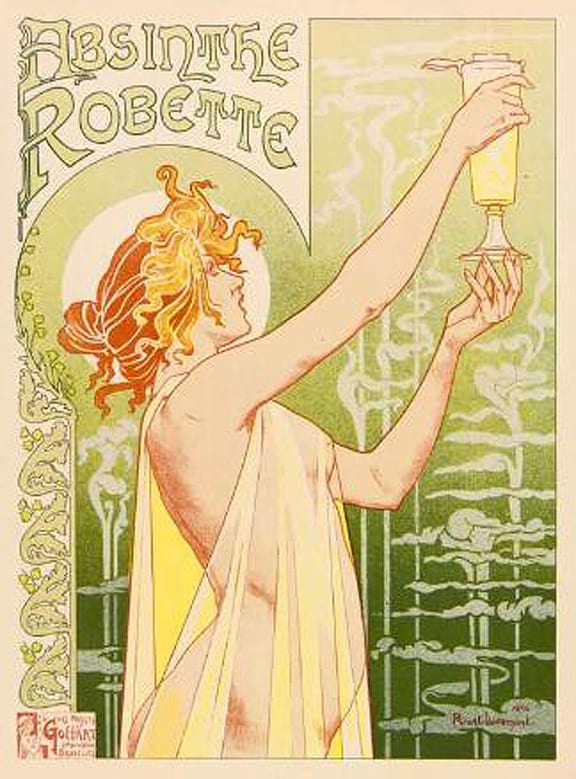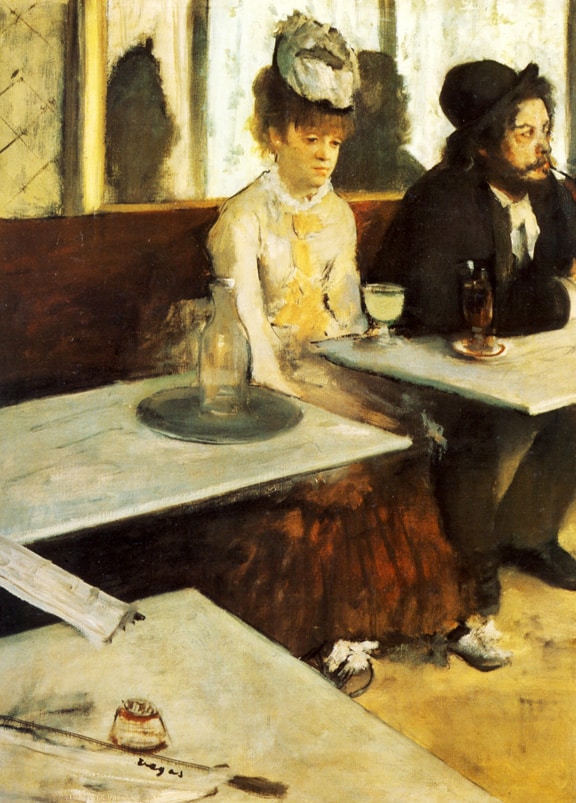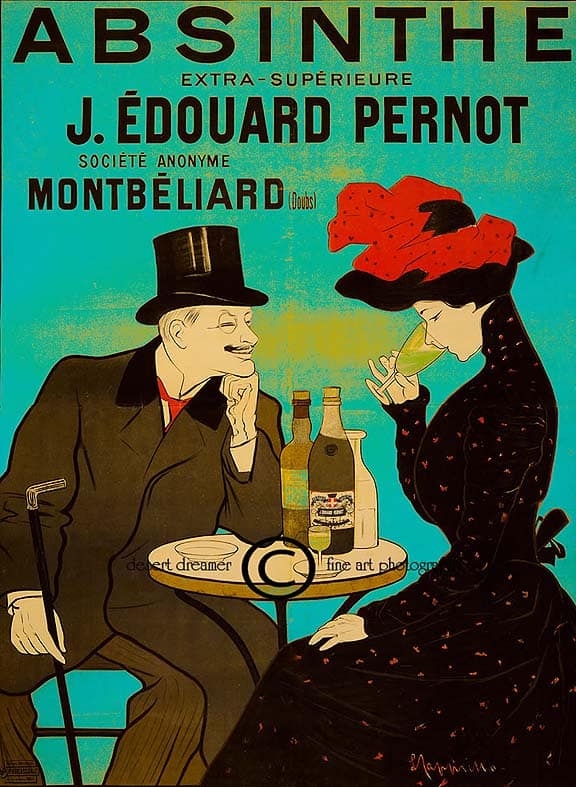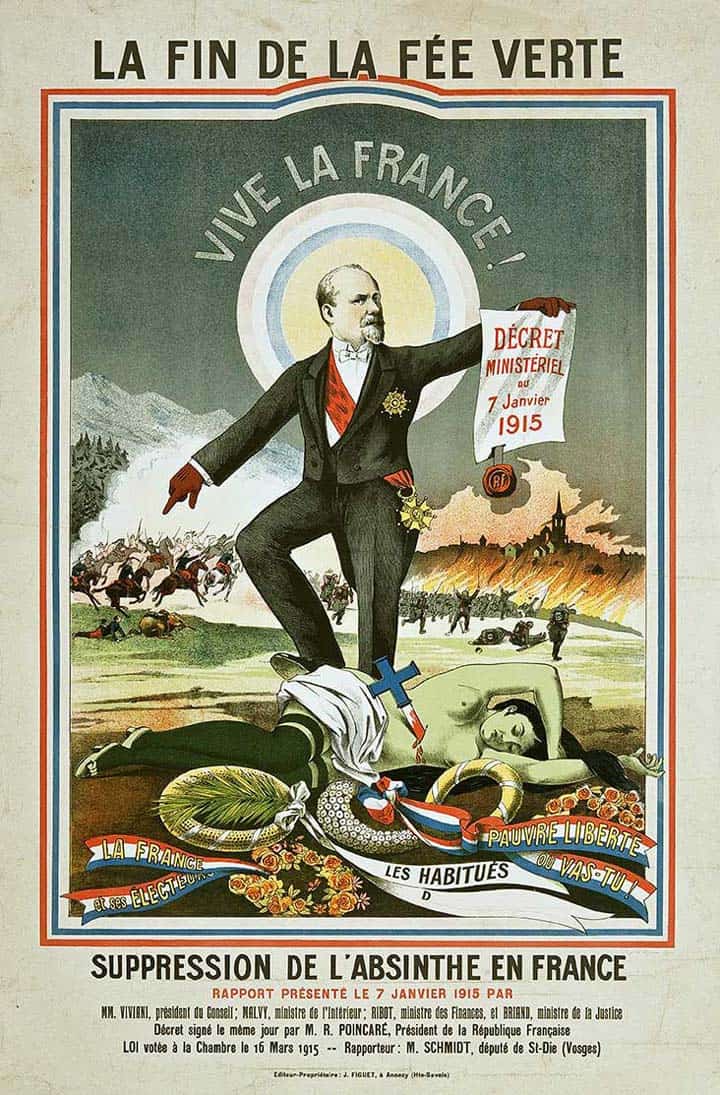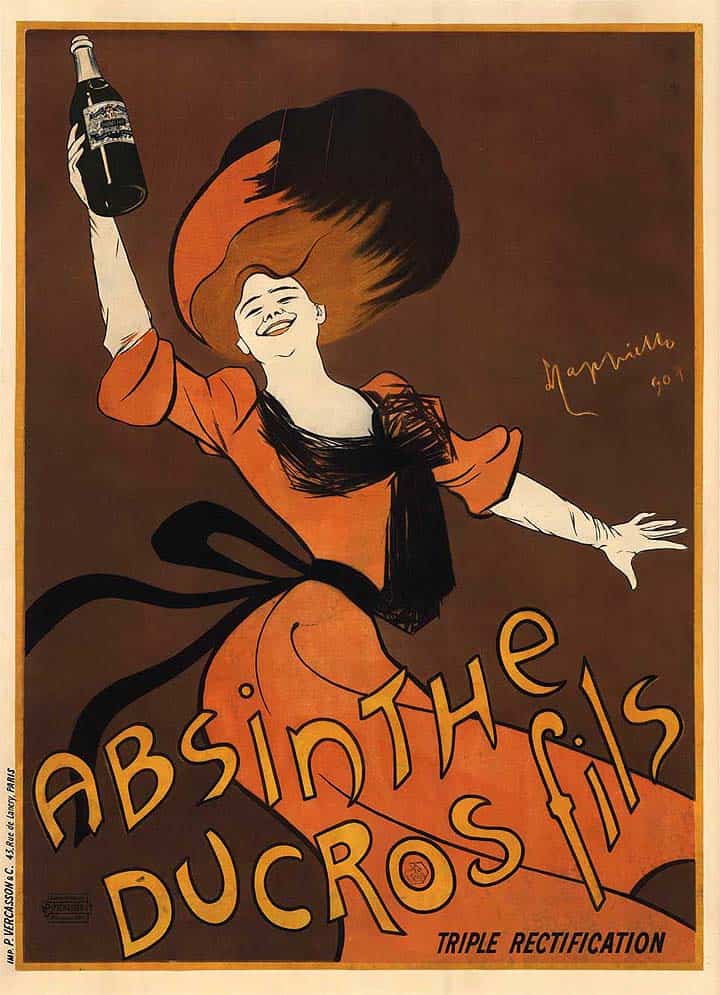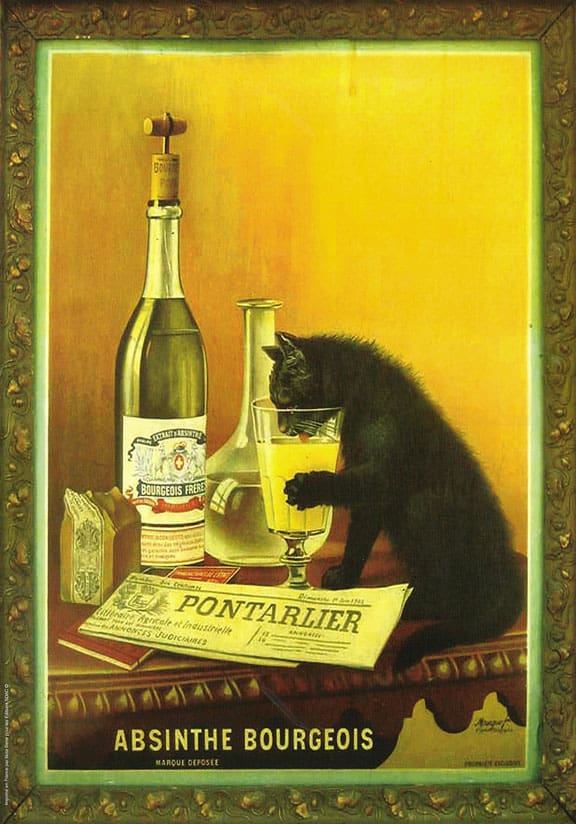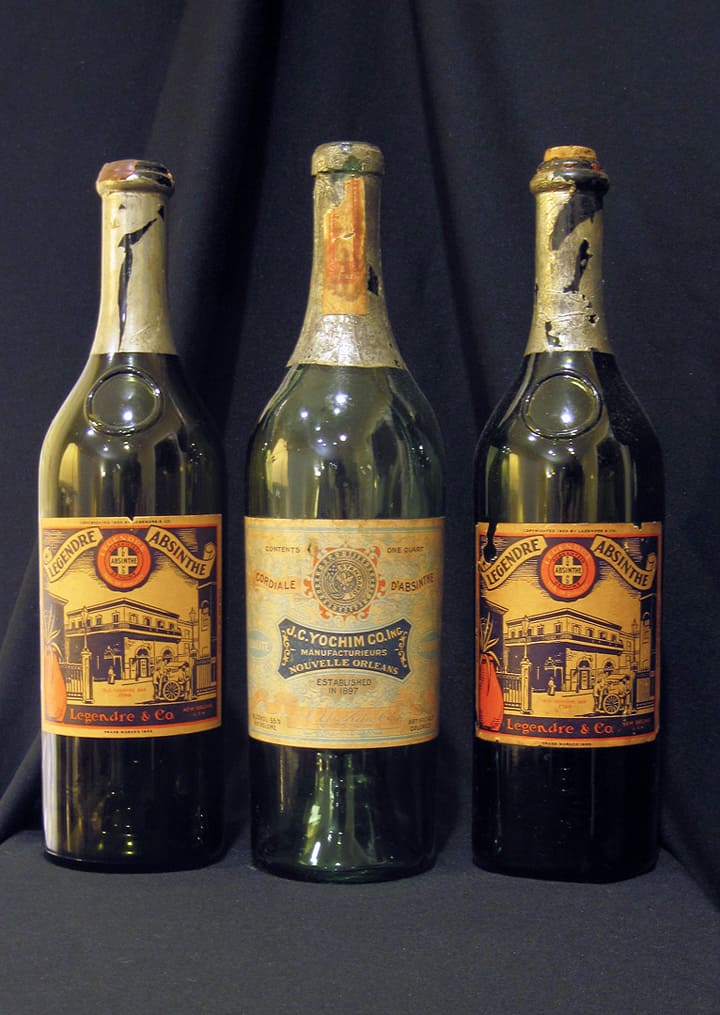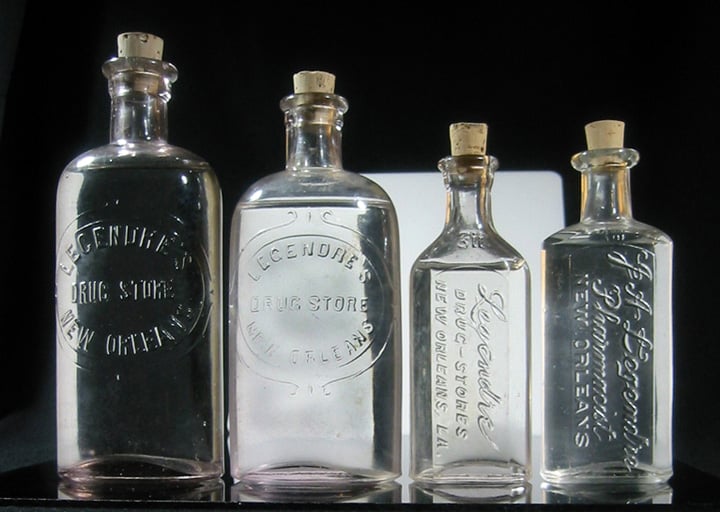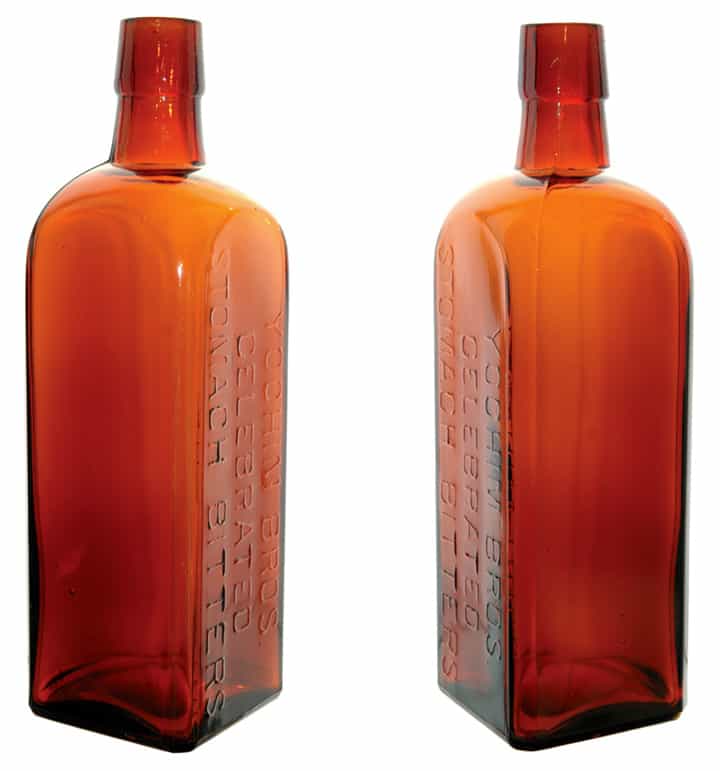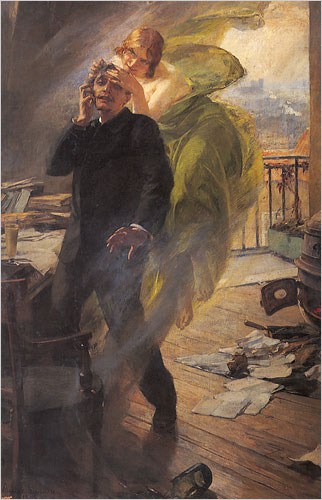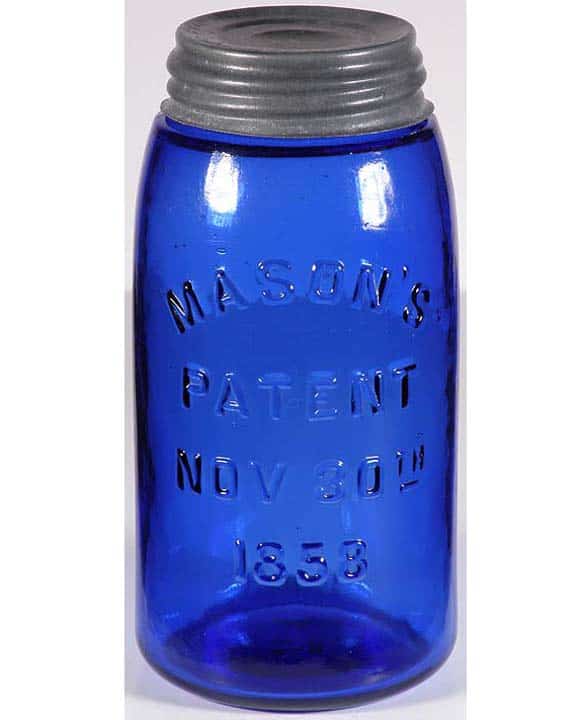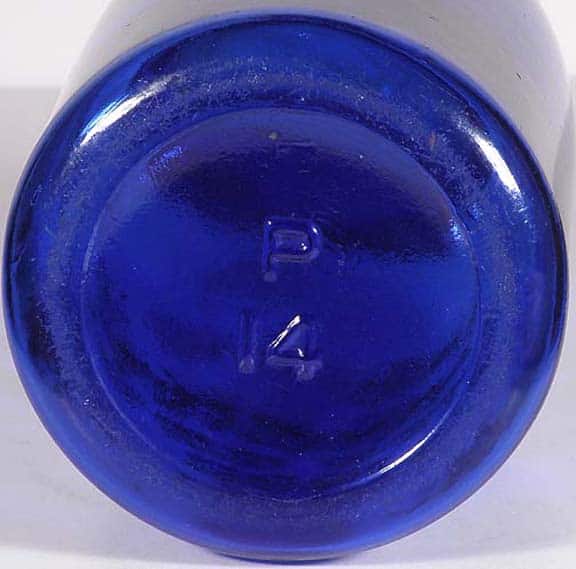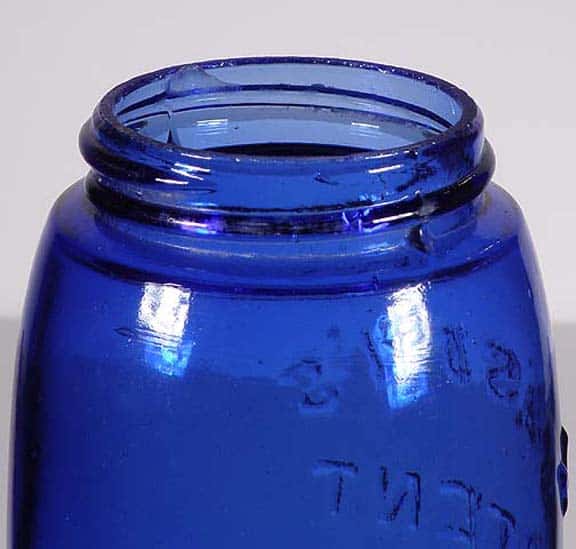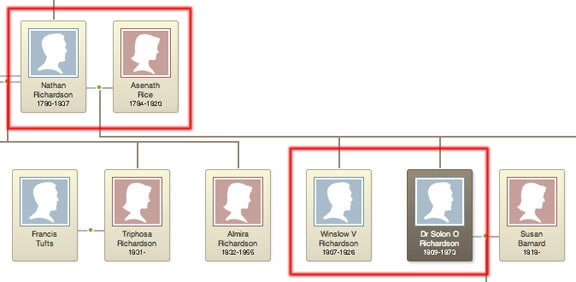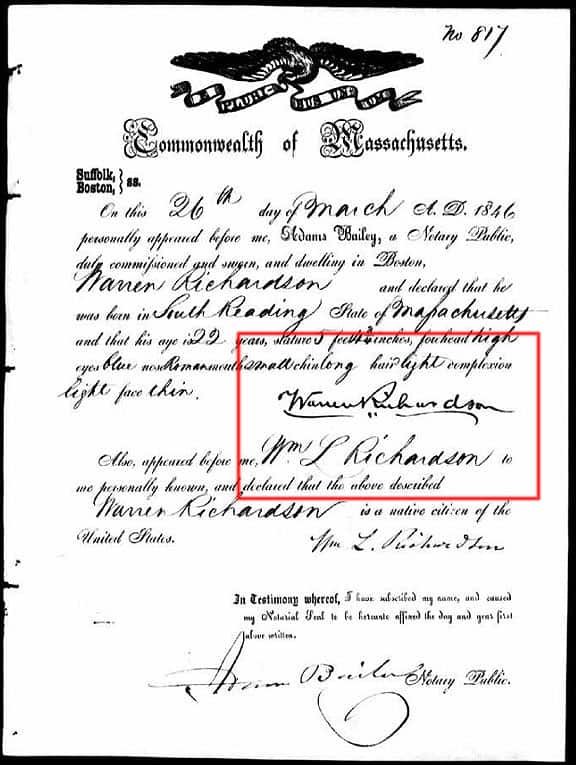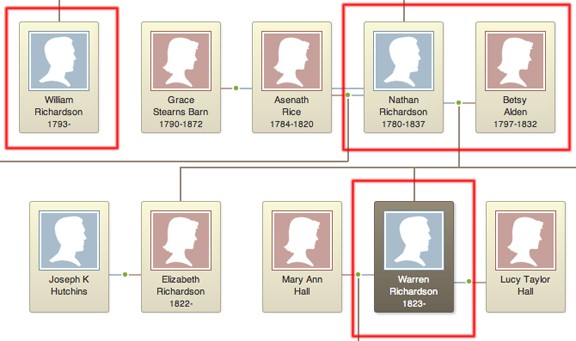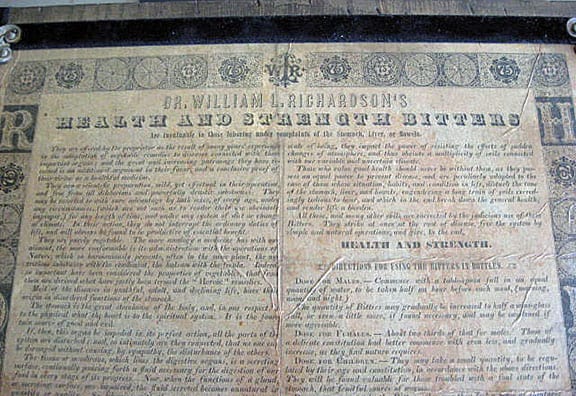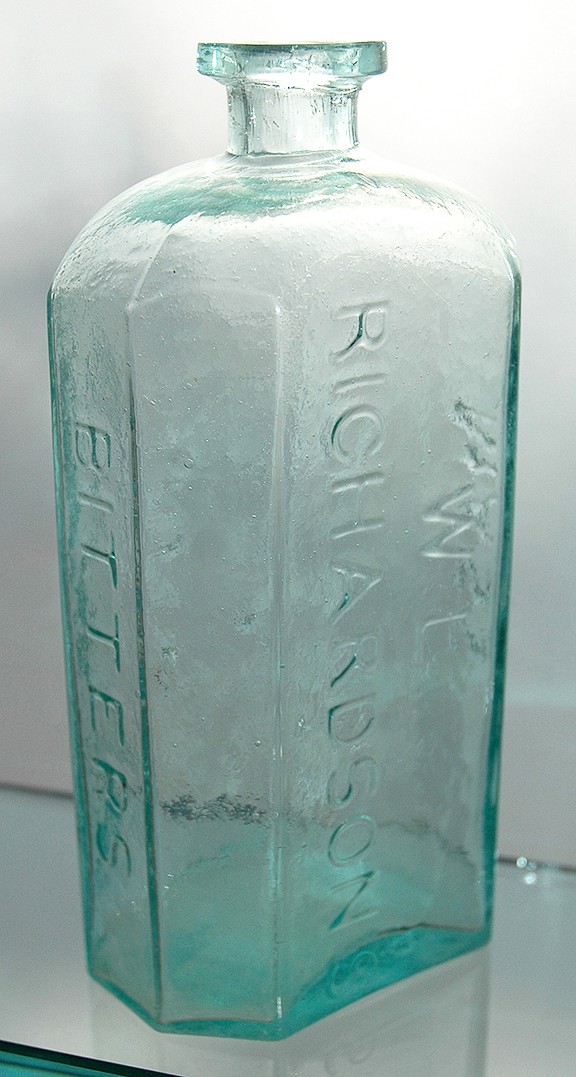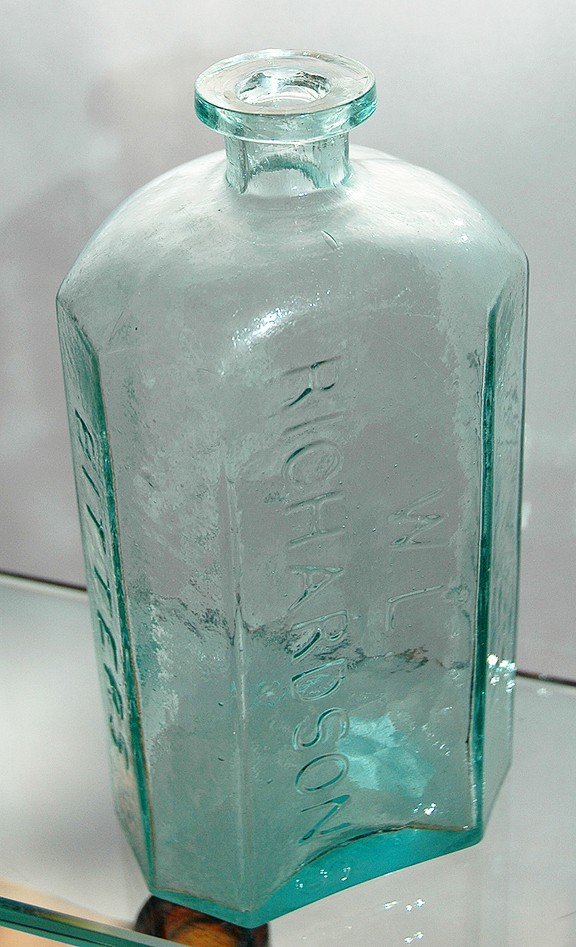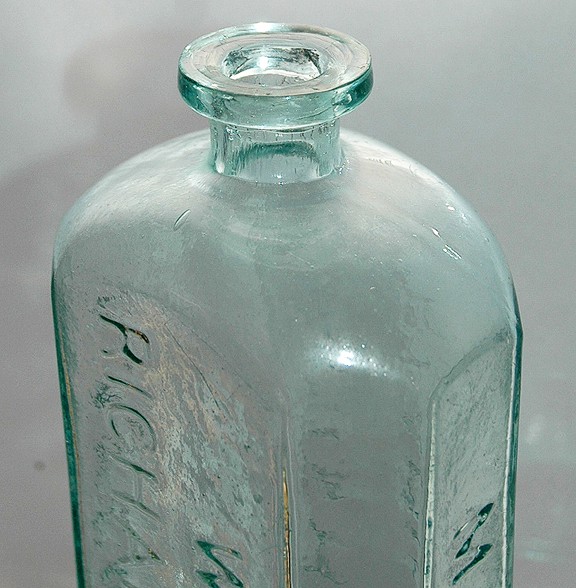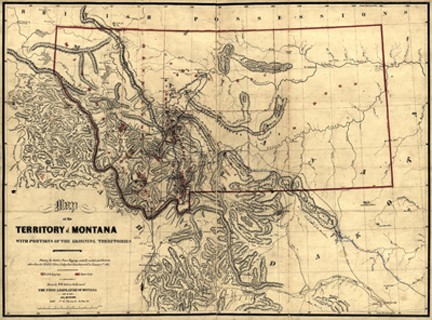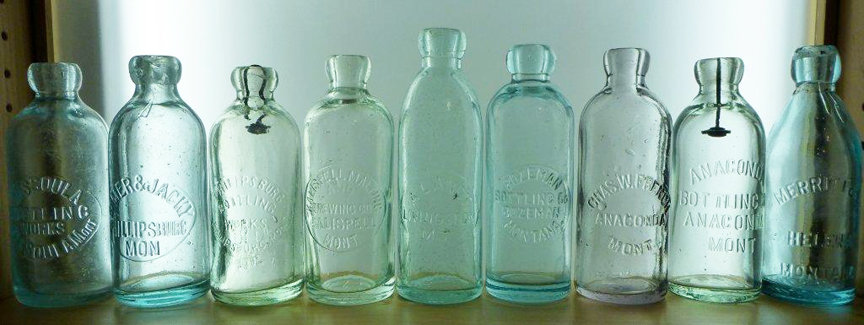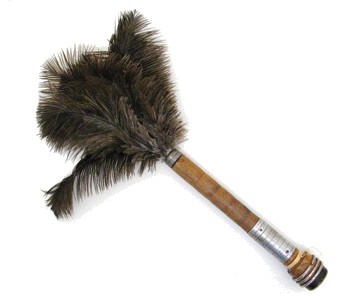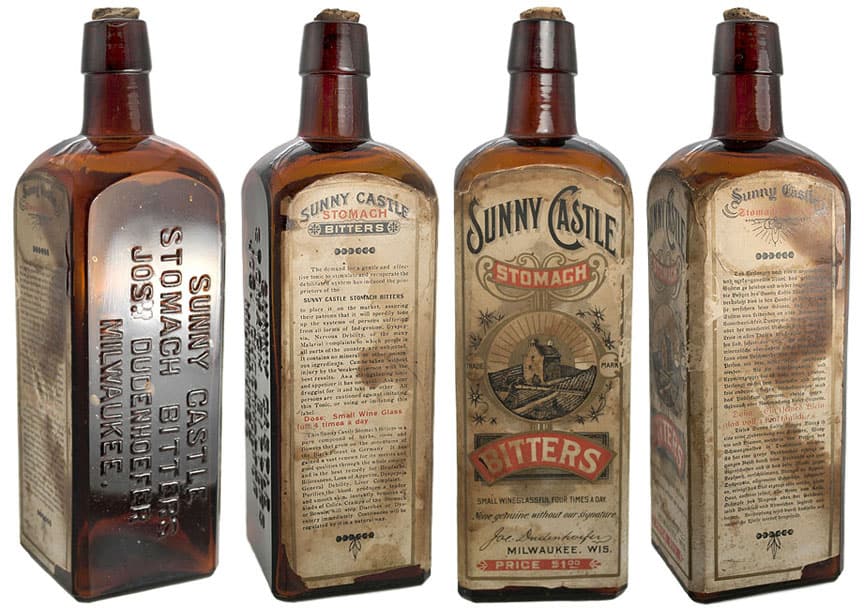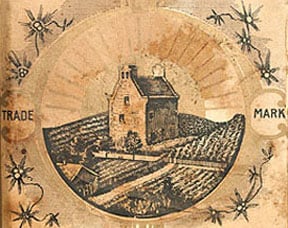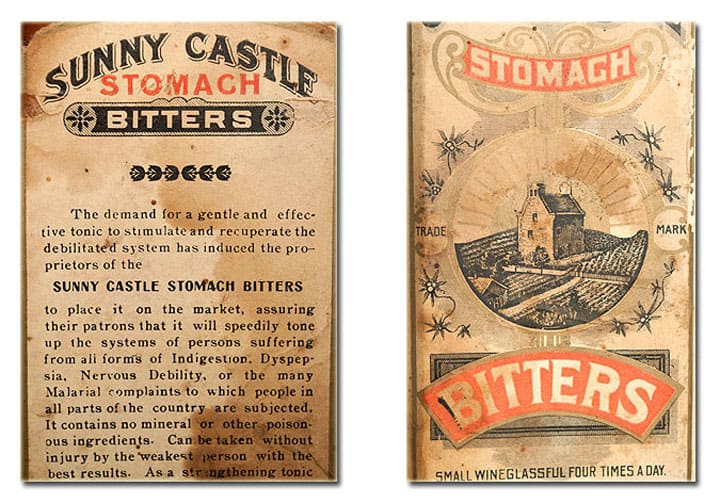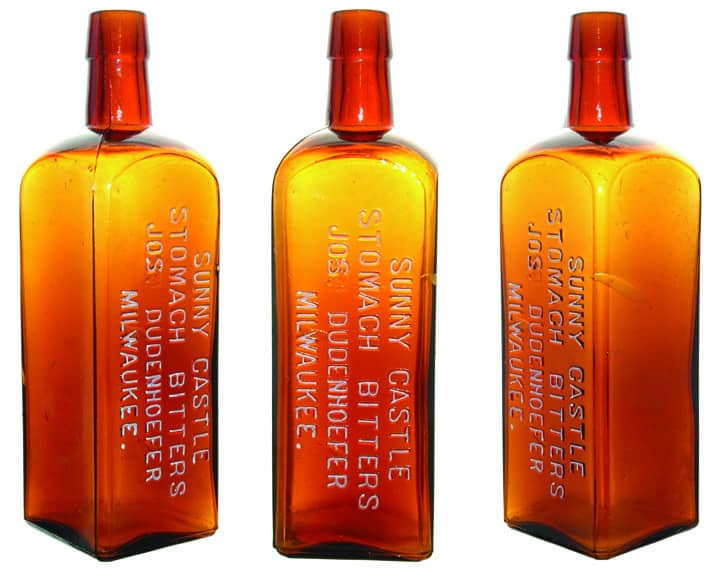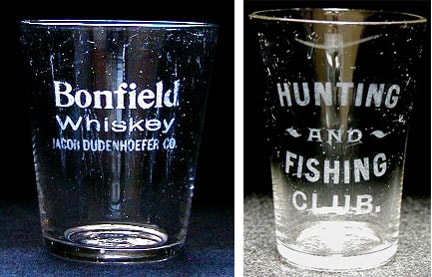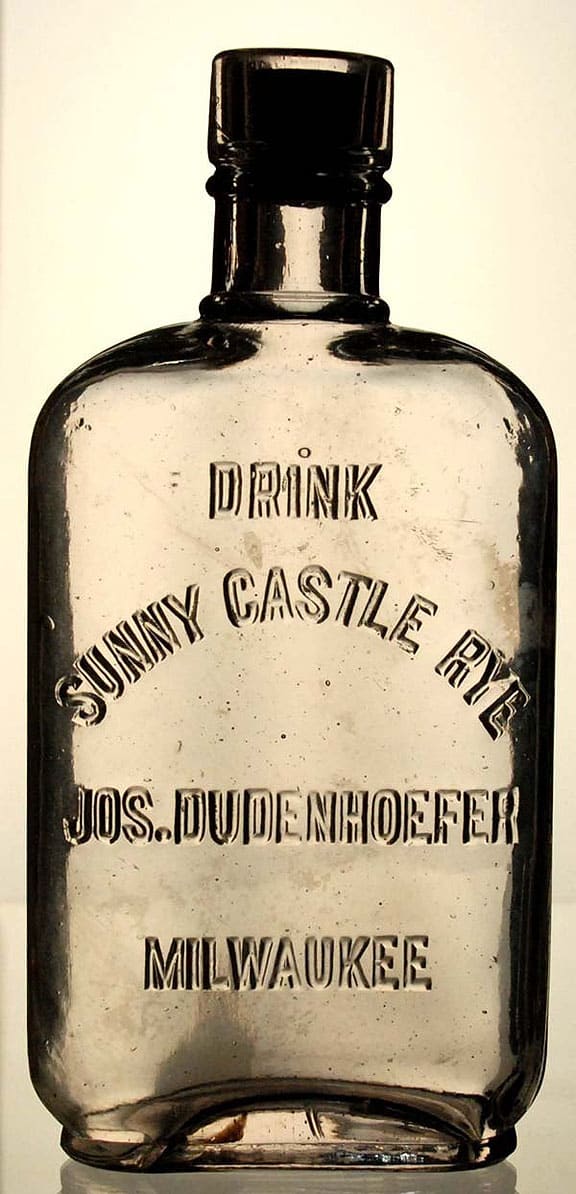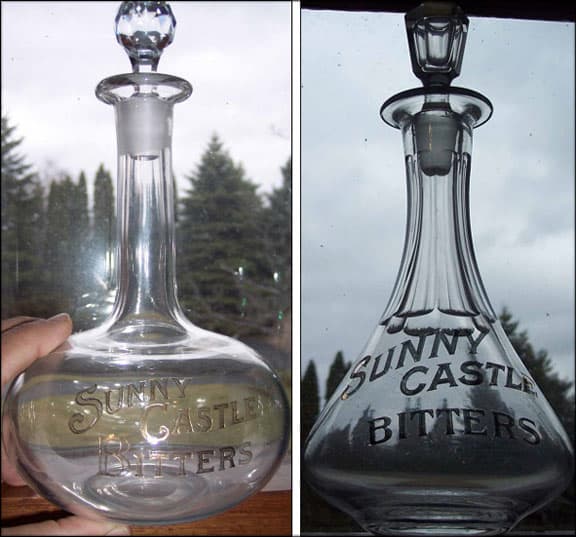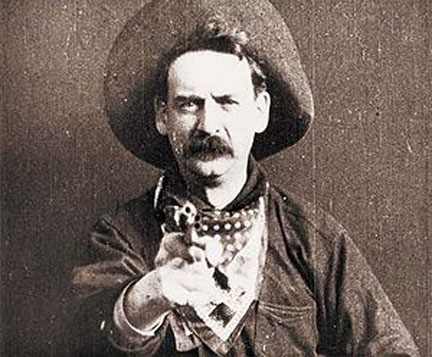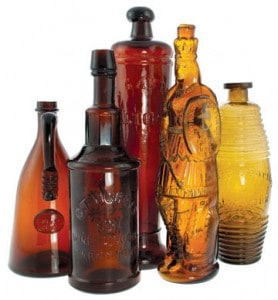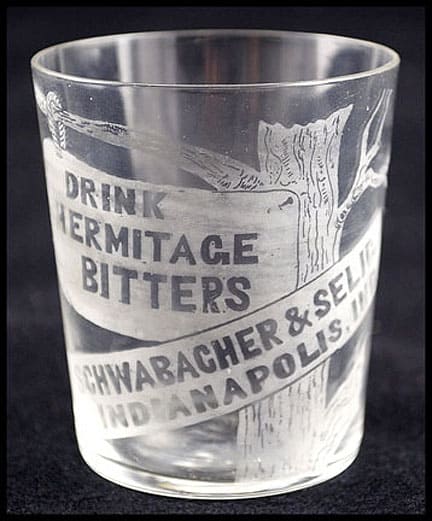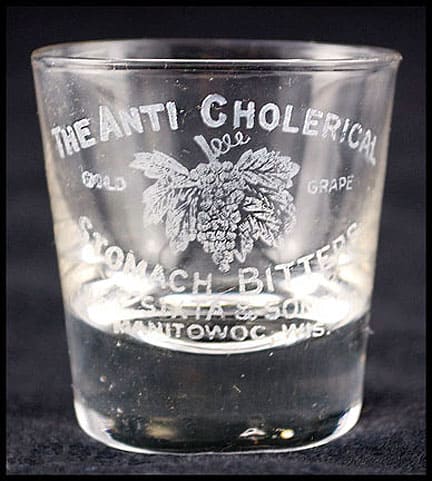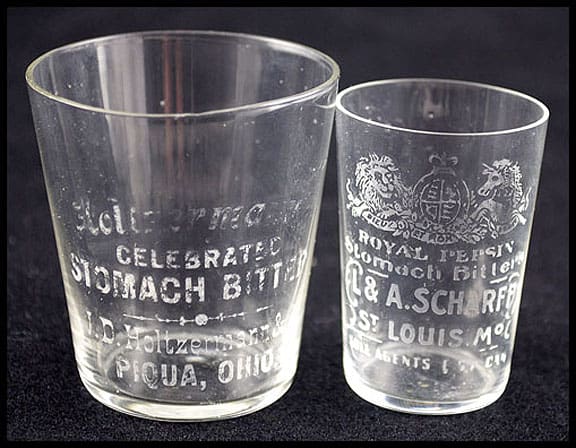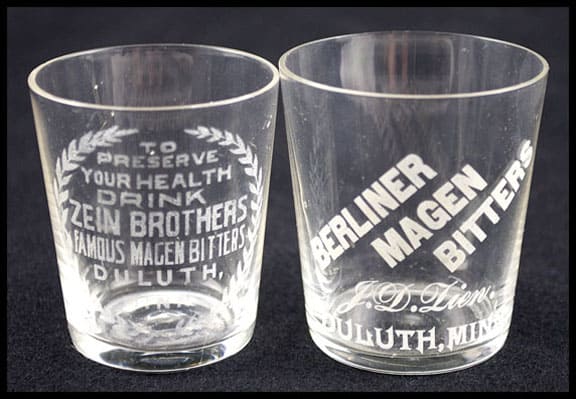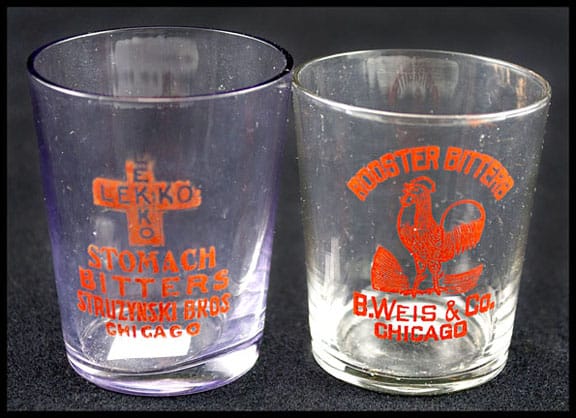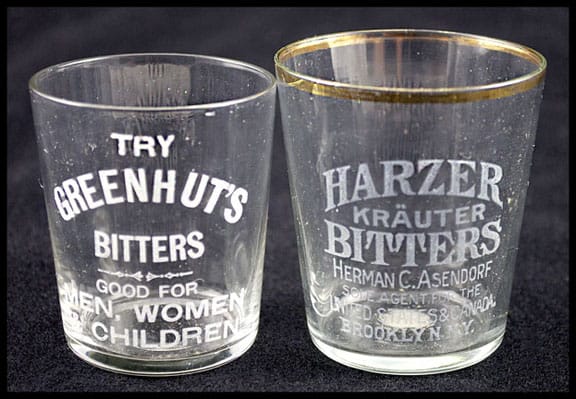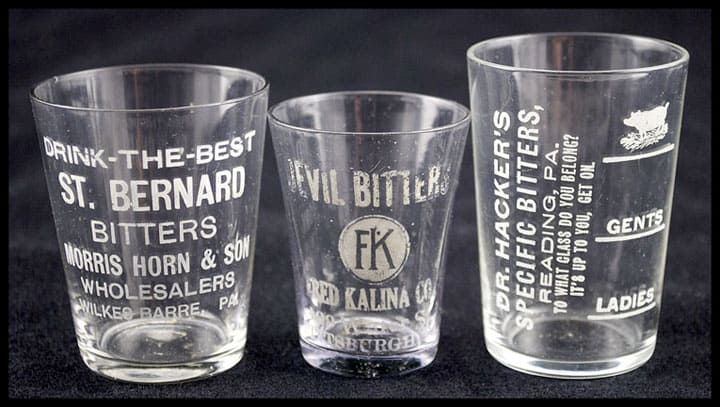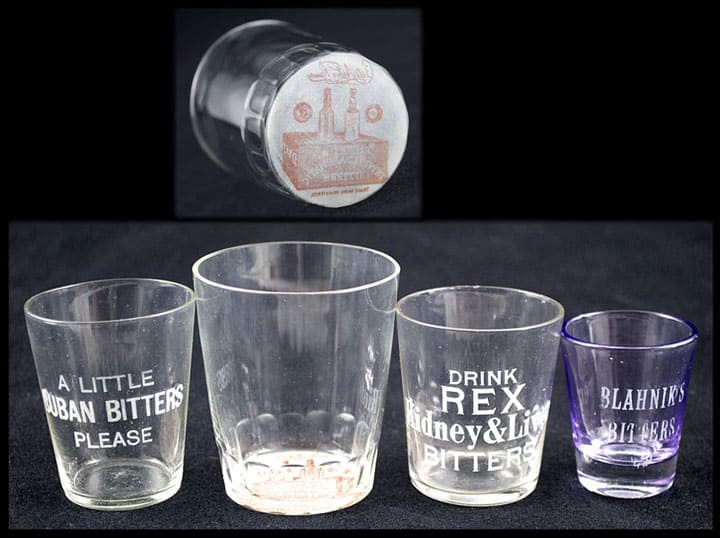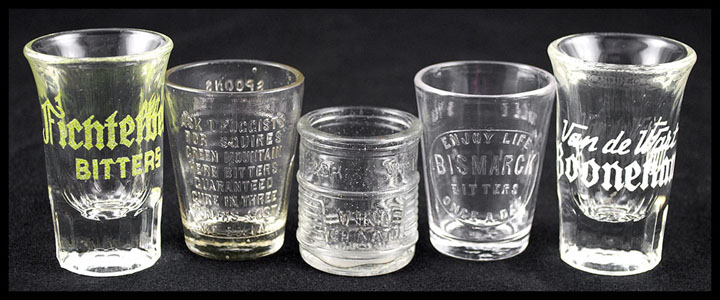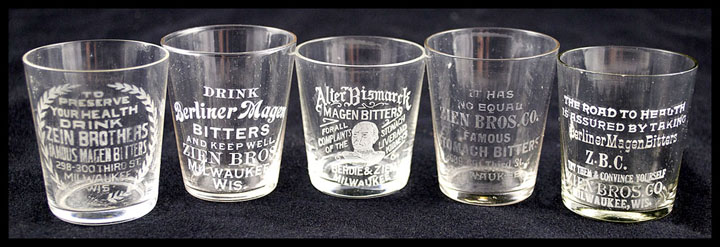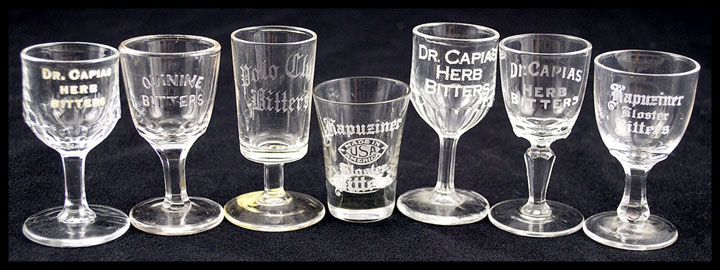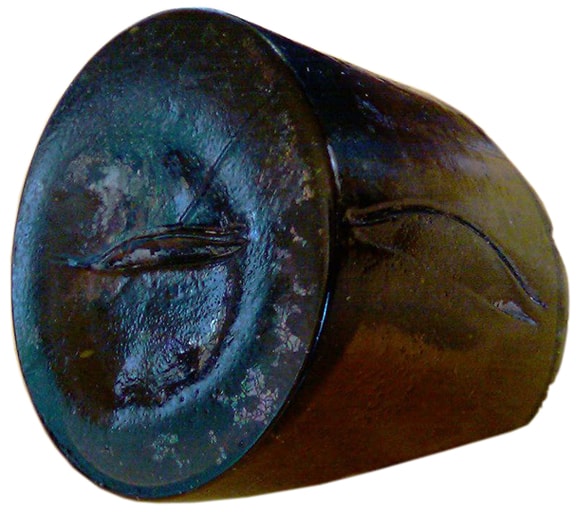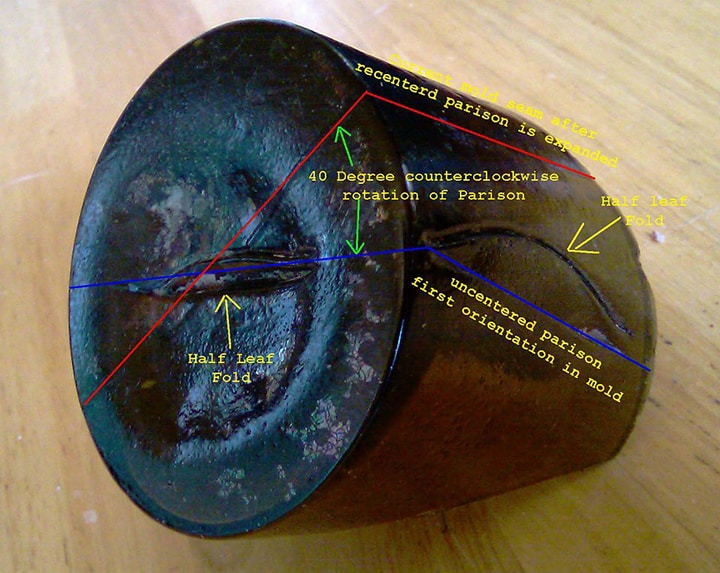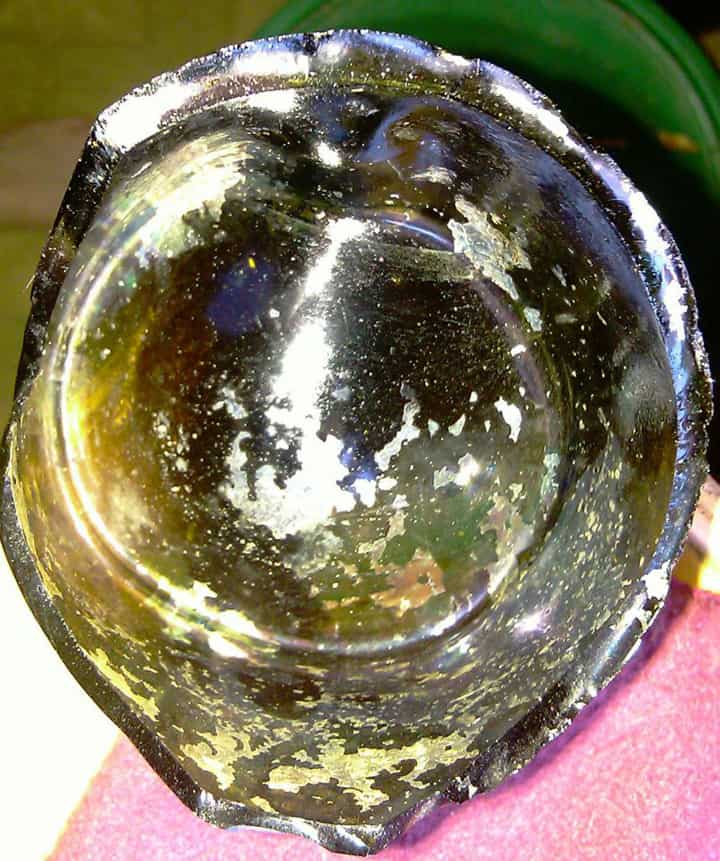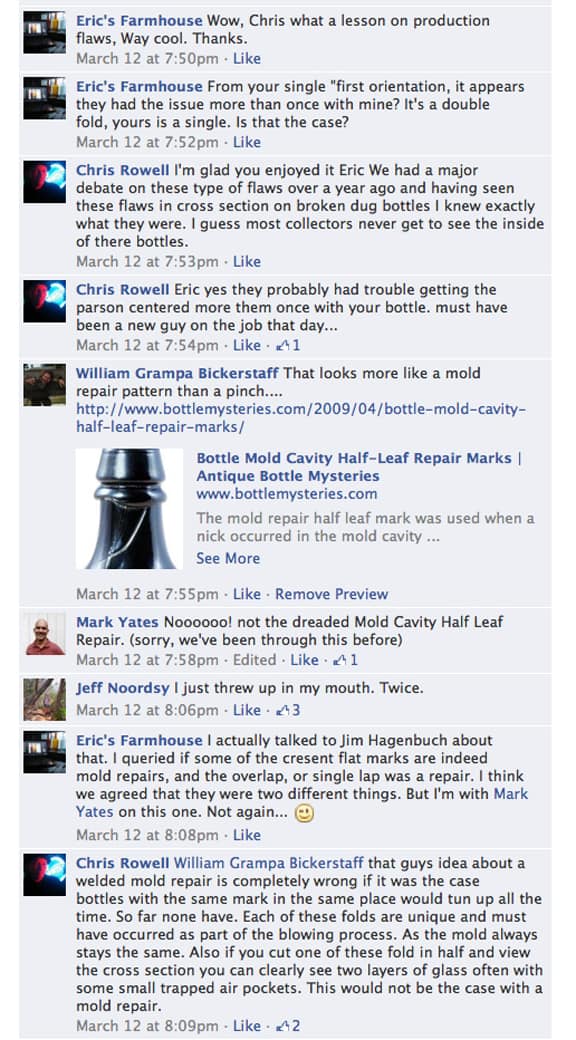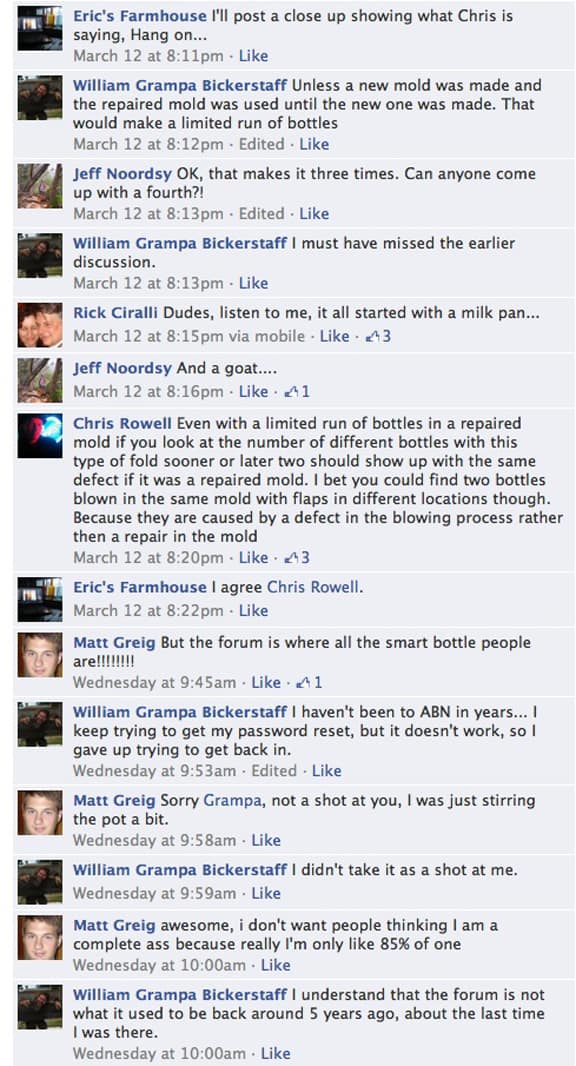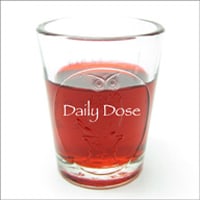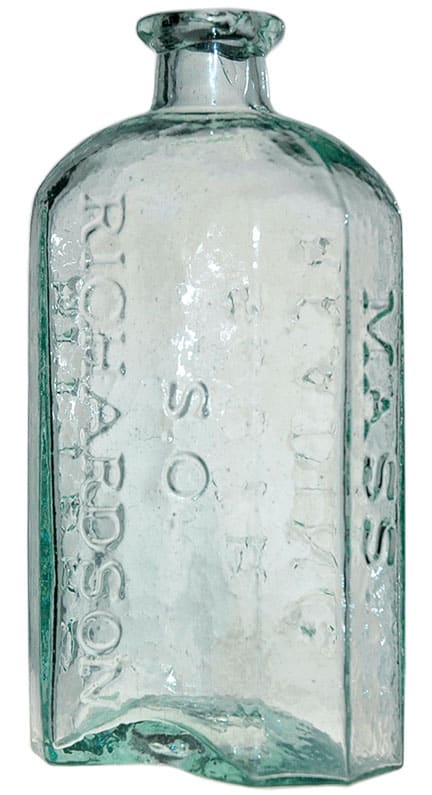
So…Who is S. O. Richardson?
Dr. S. O. Richardson’s Jaundice Bitters – South Reading, Mass.
21 March 2013 (R•013115) (R•050719) (R•082519)
 So who is S. O. Richardson? I have been wondering all these years. As it turns out, Solon Osmond Richardson was a doctor and the son of Nathan Richardson. They both pushed their bitters in South Reading, Massachusetts. The S.O. Richardson’s Jaundice Bitters (pictured above and below) is the topic of this post though I will also touch upon the Richardson’s Sherry Wine Bitters that they also both marketed. This post is not about the W.L. Richardson’s Bitters from South Reading. I will do a separate post.
So who is S. O. Richardson? I have been wondering all these years. As it turns out, Solon Osmond Richardson was a doctor and the son of Nathan Richardson. They both pushed their bitters in South Reading, Massachusetts. The S.O. Richardson’s Jaundice Bitters (pictured above and below) is the topic of this post though I will also touch upon the Richardson’s Sherry Wine Bitters that they also both marketed. This post is not about the W.L. Richardson’s Bitters from South Reading. I will do a separate post.
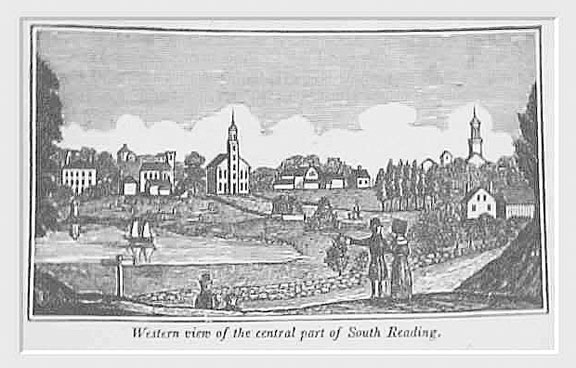
“Western view of the central part of South Reading” This very scarce image was published in 1839 from Massachusetts Historical Collections by John Warner Barber, published in 1839 in Worcester, MA, by Dorr, Howland & Co. – eBay
Here is one of the nicest bitters advertising trade cards from the collection of Ben Swanson.
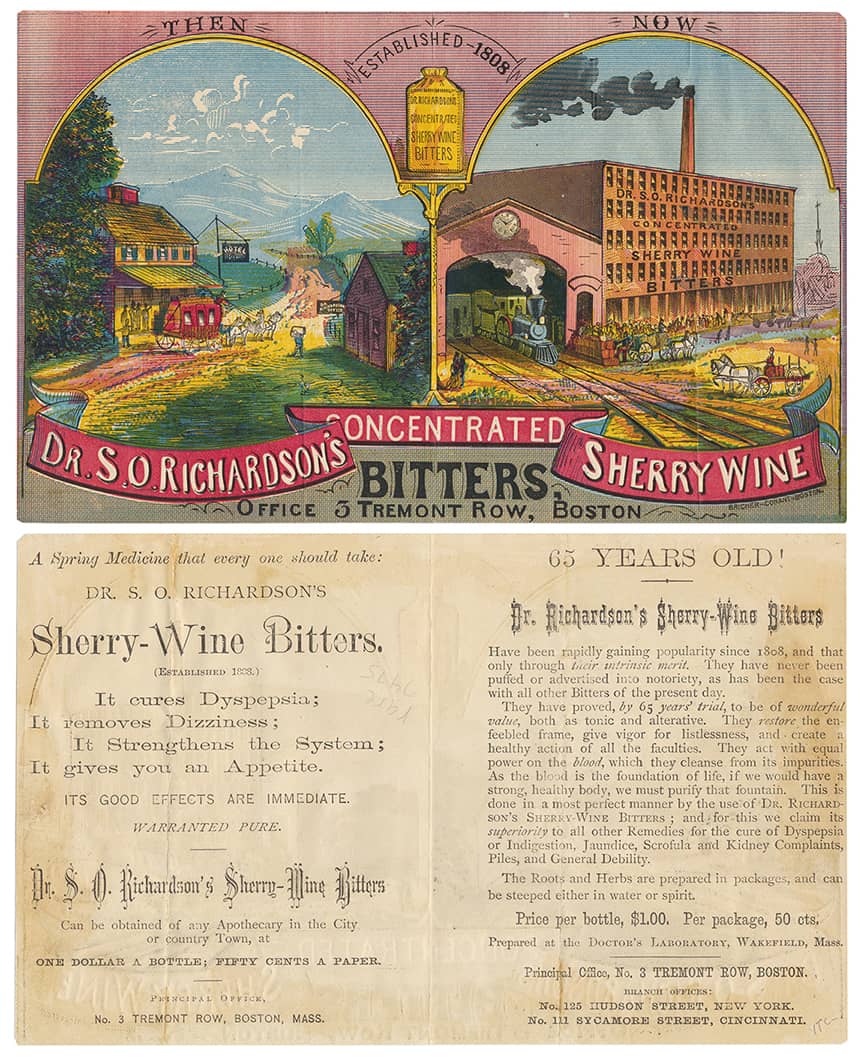
Dr. S. O. Richardson’s Concentrated Sherry Wine Bitters trade card – Ben Swanson Collection

Postal card noting Dr. S. O. Richardson’s Sherry-Wine Bitters and Dr. S. O. Richardson’s Jaundice Bitters – Gourd Collection
There is an abundance of historic and later material on Dr. S. O. Richardson but before we get into Solon Osmond Richardson we need to look at his father Nathan Richardson and what Carlyn Ring and W.C. Ham say about the bottle in Bitters Bottles:
S. O. Richardson’s Bitters
R 57 S. O. / RICHARDSON’S // BITTERS // SOUTH READING // MASS //
L…Richardson’s Jaundice Bitters
6 7/8 x 3 1/4 x 2 1/8 (5) 3/4
Rectangular, Aqua and Light Blue-green. NSC, Applied mouth, With and without Rough pontil mark and Metallic pontil mark, Common
Label: Prepared at my laboratory South Reading, Mass. Sold wholesale and retail at my office 15 Hanover Street, Boston, and by my advertising agents.
Newspaper advertisement 1840: Relieves heartburn and piles. 75 cents a bottle. 50 cents dry bitters in pressed form. Newburyport Herald (Mass.) May 4 , 1869
Daily Evening Bulletin (Haverhill, Mass.) January 28, 1892
Drug Catalogs: 1871 Schieffelin; 1872 Fuller & Fuller, Melliers, Schieffelin; 1874 VS&R Co.; 1876-7 Goodwin; 1878 CB&Co.; 1880 Goodwin; 1883 Schieffelin; 1885 Goodwin, 1887 MP; 1888 RS; 1891 Schieffelin; 1896-7 and 1901-2 JP&K Co.
R 56 RICHARDSON’S DRY BITTERS
FRE 572
Drug Catalogs: 1876-7 Goodwin, 1833 M&R, 1885 Goodwin, 1891 Schieffelin, 1894 M&R
Dry refers to powdered form. Much more unusual than liquid.
Dr. Nathan Richardson
Nathan Richardson, son of Nathan and Mary (Belknap) Richardson, was born in Brookfield (Worcester County), Massachusetts on 16 November 1781. His early education was limited to the town school, which was usually kept about seven months of the year, and during the remainder he assisted on his father’s farm, which comprised many acres in extent.
As a boy, he was very fond of books, and read everything that came in his way. His mother used to relate many anecdotes of his love of reading, as when she sent him to the post-office, several miles distant, he would buy a book with the money given him to purchase his dinner, and on his way home would let the horse stroll leisurely along at will, while he was absorbed in his newly acquired volume. His father, becoming exasperated at his over-fondness for reading, and the neglect of his labor on the farm, threatened to burn every book he possessed. This compelled him to conceal his books in the barn, and while pitching down hay from a loft one day, his father was surprised at the sudden appearance of a shower of books.
This compelled him to conceal his books in the barn, and while pitching down hay from a loft one day, his father was surprised at the sudden appearance of a shower of books.
This love of reading continued through life. Poetry seemed to possess the most attraction. His memory of what he read enabled him to repeat the whole of Pope’s “Essay on Man”, “Milton’s Paradise Lost,” and the “Book of Job.” Although never a disputant, yet he would not hesitate to measure weapons with any minister who chose to argue with him. His general information was extensive, and he had a large fund of humorous anecdotes in constant readiness.
In what year he commenced the study of medicine it is not recollected; but he was a student of the famous Dr. Kittredge, in company with Dr. D. A. Grosvenor, who settled in Reading.
Nov. 28, 1805, when twenty-four years of age, he married Asenath Rice, of Brookfield, and went to North Reading, where he began the practice of a physician. That he possessed a peculiar aptitude for his calling was immediately apparent. He soon had the custom of that entire community, and also of the neighboring towns. While residing in North Reading, two sons were born, Winslow and Solon Osmond. Winslow died at the age of eighteen, in South Reading; and Solon Osmond was educated as a physician, became eminent, and died Aug. 31, 1873.
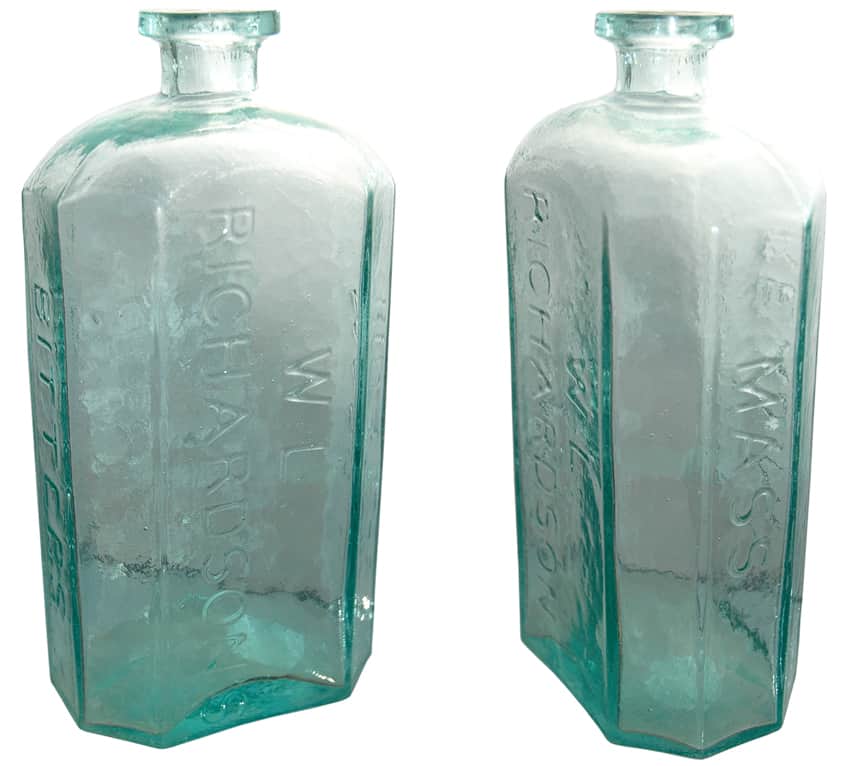
R 58 – W. L. RICHARDSON’S BITTERS – Meyer Collection
**PRG – Another real mystery is who is “W. L. Richardson” which is embossed on the R 58, W. L. Richardson’s Bitters from South Reading, Massachusetts. There is absolutely no information on this bottle. I wonder if the “W” stood for “Winslow” who died at eighteen as noted above? The label says “Richardson’s Sherry Wine Bitters”. Paying homage?
Read: W.L. Richardson’s Bitters – South Reading
After several years’ residence in North Reading, Dr. Richardson removed to Reading, and occupied the house now owned by Mr. Appleton, on the road leading to Woburn. His wife died here Sept. 8, 1820. He then determined to remove to Cambridge, sold his place and practice to Dr. John Hart, of South Reading, for the occupancy of his son, and pledged himself in the sum of two hundred dollars not to practice within ten miles of Reading; but on the eve of his departure from Reading, some of the prominent citizens of South Reading, headed by the late Burrage Yale, unwilling to have so excellent a physician leave their neighborhood, prevailed upon him to remove to South Reading, and sacrifice his bonds, offering him, as a special inducement, the large tract of land on a part of which his residence was built; the estimated value of the land, at that time, being $1,500. He thereupon removed to South Reading, occupying what was known as the “old Prentiss House” while his own residence was building, which was subsequently that of his son, and is now occupied by his grandson.
Perhaps some of the present inhabitants of Wakefield remember the occasion of the “raising” of the frame-work of the Doctor’s house. It was a general holiday for the town; every man, woman, and child participated, and gave a helping hand.
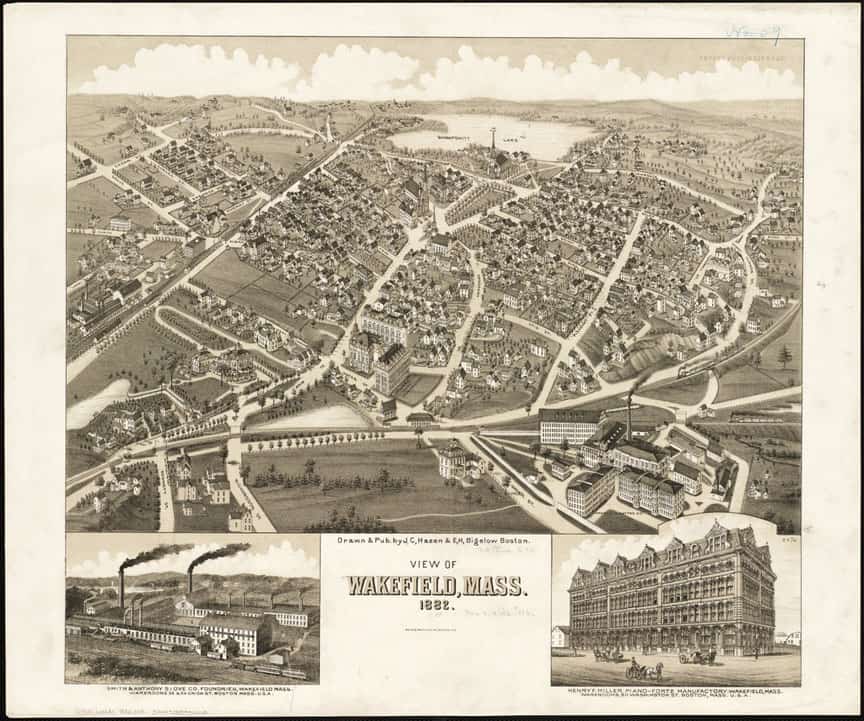
About the year 1822, Dr. Nathan Richardson removed from Reading, where he had long been a successful practitioner, and settled in Wakefield (see map above). Dr. Richardson had been accustomed to prepare sundry articles of medicine, especially sherry wine bitters, which had become justly celebrated for their excellent medical and health-giving properties. After his removal to Wakefield, in connection with his son, Dr. Solon O. Richardson, and subsequently by the son alone, the preparation of these medicines was improved, systematized, and their sale widely extended, and the fame thereof spread the country over ; the business in: 1868 amounting, it is said; to $100,000 annually.
[above from] “Genealogical history of the town of Reading, Mass., including the present towns of Wakefield, Reading, and North Reading, with chronological and historical sketches, from 1639 to 1874“
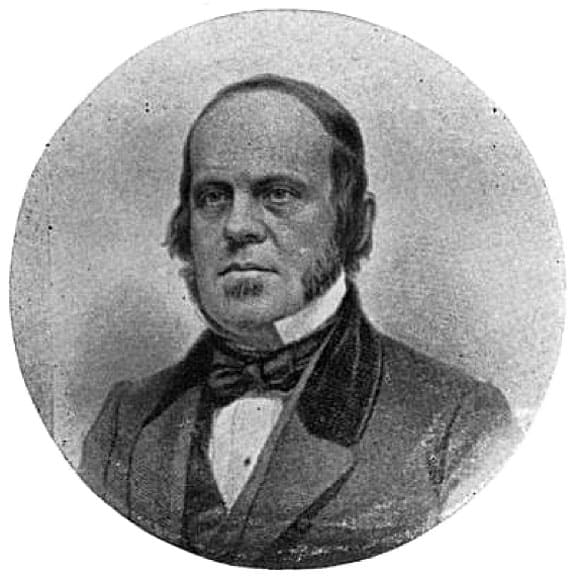
Dr. Solon Osmond Richardson
Dr. Solon Osmond Richardson (pictured above) was one of South Reading’s best known citizens, famed for his wealth from selling patent medicines, and also because of his funding of the Richardson Light Guard militia company, named in his honor.
A major part of the family medical practice was the manufacture and distribution of an herbal health tonic known as “Richardson’s Sherry Wine Bitters.”
Richardson was born on July 19, 1809 in what is now North Reading. His parents, Dr. Nathan Richardson and Asenath (Rice) Richardson, moved the family in 1821 to Wakefield, at the time known as South Reading, to a large property on the west side of Main Street near West Water Street. Young Solon studied in the local public schools, as well as academies in Atkinson and Derry, New Hampshire, and worked in his father’s medical practice as a pharmacist. He later graduated from Dartmouth College with a medical degree in 1831, and also attended lectures at Harvard Medical School. He served as an assistant surgeon at the State Prison and soon became a member of the Massachusetts Medical Society. A major part of the family medical practice was the manufacture and distribution of an herbal health tonic known as “Richardson’s Sherry Wine Bitters.” The product was so popular that Solon took over its production in 1832, and subsequently inherited the business on his father’s death in 1837.
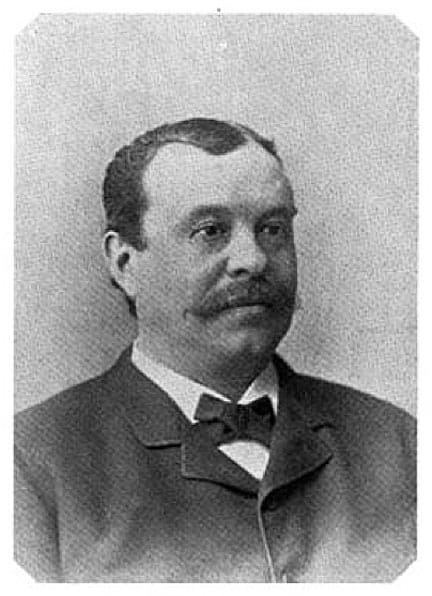
Solon Osmond Richardson II
He married Susan Barnard on April 3, 1837, and had two children, one a girl who died in infancy, and the other a boy, Solon Osmond Richardson II (pictured above) who would in turn become a well-known figure in Wakefield. Solon II was born on September 9, 1841 in the family home.
His other main claim to fame was his generous funding of the South Reading’s local militia company, the Richardson Light Guard, which was formed in 1851 and named in his honor.
Richardson’s health began to decline around this time, and he retired from medical practice to focus exclusively on the sale of his patent medicines. His other main claim to fame was his generous funding of the South Reading’s local militia company, the Richardson Light Guard, which was formed in 1851 and named in his honor. The Guard served in the Civil War, fighting in the Battle of Bull Run, as well as fighting in Puerto Rico during the Spanish-American War, and also in World War I. Dr. Richardson had provided an initial donation of $500, and followed with annual donations for many years which helped fund parades, target practice, and other activities of the Guard. Dr. Richardson also served for a year as Town Treasurer, and was a longtime member and supporter of the Universalist Society.
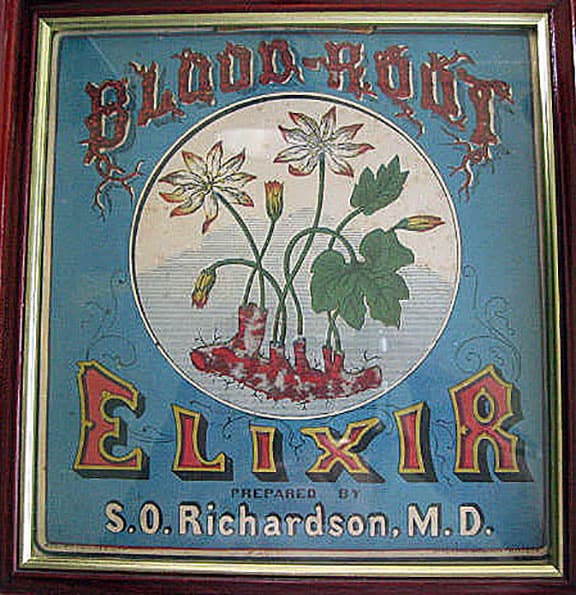
Contemporary framed Blood Root Elizir prepared by S.O. Richardson. M.D. – Kimberly Richards
In 1869, while on business in Boston, he suffered an attack of paralysis which restricted his activities in the final years of his life. Despite his infirmity he remained active, and was instrumental in obtaining memorial oil paintings of his good friend and neighbor Cyrus Wakefield as well as President George Washington for the Town Hall building which Cyrus donated to the town. Richardson died on the evening of August 31, 1873, while visiting his Cyrus Wakefield at the Wakefield Estate on Main Street.
The Richardson family home was built on what is now the northwest corner of Main Street and Richardson Avenue in either 1817 or 1822 (sources vary). The family owned considerable property from Main Street all the way to North Avenue, and one of the noteworthy structures was an unusual octagonal horse stable located approximately where the parking lot behind Farmland grocery store is today. In the 1890s the main house was moved back a block to the corner of the newly laid out Richardson Avenue and Foster Street; it was later demolished. On the Main Street site where the house was originally located, Solon II built a brick commercial building in 1901 known as the Richardson Block, which is still extant. The new side street was named Richardson Avenue in honor of the family. A second home owned by the family was located nearby and later moved south to 694 Main Street at the corner of Summer Street, where it still stands today.
Solon II was also prominent in Wakefield affairs, serving as Selectman, president of the Wakefield Savings Bank, as a trustee of the Lucius Beebe Memorial Library, and as a state representative in the General Court. On October 2, 1862 he married Abbie Maria Richardson (April 3, 1843 – December 19, 1895) and had two sons, Solon O. Richardson, Jr., and Dana Foster Richardson, both of whom relocated to Ohio. He took over his father’s business after his death in 1873, but later sold it in 1891 to Talcott, Frisby & Co. of Hartford, Connecticut. Solon II died in his family home, the same one in which he was born, on October 1, 1922. [wakefieldlibrary.org]
Read More: History: Dr. Richardson’s Bitters
Richardson’s Sherry Wine Bitters
In 1808, Dr. Nathan Richardson, had introduced into his practice a remedy which he called “Sherry Wine Bitters” which proved an effective agent, the favorable results of which, as ascertained from a prolonged and extensive use thereof among his patients, gave it big repute, the demand becoming such that instead of supplying it in powdered form, as for many years he had prescribed it, for convenience’ sake he prepared it in common quart wine bottles. Soon after engaging in practice with his father, Dr. S. O. Richardson observed with satisfaction the beneficial effects of these “Bitters” and naturally made extensive use of them in cases to which they were adapted.
[above from] “Genealogical history of the town of Reading, Mass., including the present towns of Wakefield, Reading, and North Reading, with chronological and historical sketches, from 1639 to 1874“
The new listing in Bitters Bottles Supplement 2:
Receipt
R 61.5 DR. S. O. RICHARDSON’S SHERRY WINE BITTERS, Received, this day, or sale of J. N. Harris & Co., of Cincinatti, Ohio the following articles… Dr. S. O. Richardson’s Sherry Wine Bitters, @ $8.50. See R 67 and page 467 in Bitters Bottles.
Trade card (folding)
R 61.5 DR. S. O. RICHARDSON’S CONCENTRATED SHERRY WINE BITTERS, Office 3 Tremont Row, Boston. Then and Now illustration of Dr. Richardson’s initial rural house used for manufacturing and present 5-story urban factory with Dr. S.O. Richardson’s Sherry Wine Bitters graphics on facade of building and train shed. Established 1808. Paper wrapped bottle. Reverse: 2 panels of promotion, 65 Years Old! Dr. S.O. Richardson’s Sherry Wine Bitters, One Dollar a Bottle. Fifty Cents a Paper. Branch offices in New York and Cincinnati.
Broadside
R 65.1 DR. SOLON OSMOND RICHARDSON’S JAUNDICE BITTERS, 9 3/4 x 14 3/4. Established in 1808. Reason’s for using Dr. Richardson’s Bitters, Directions for using the Bitters in Bottles. Direction for preparing & using the Bitters in Papers, Beware of Imposition, Caution to Purchasers. Entered according to the act of Congress in the year 1810 by S. O. Richardson in the Clerks Office of the District Court of Massachusetts. See R 57 and page 466 in Bitters Bottles. See s2R 61.5
Postal Card
R 65.1 DR. S. O. RICHARDSON’S JAUNDICE BITTERS, United States Postal Card, U.S. Postage One Cent, Reverse: Dr. S. O. Richardson’s Sherry Wine Bitters, Dr. S. O. Richardson’s Jaundice Bitters, 187_. See R 57 and page 466 in Bitters Bottles. See s2R 61.5
Dr. Solon Osmond Richardson’s Jaundice Bitters
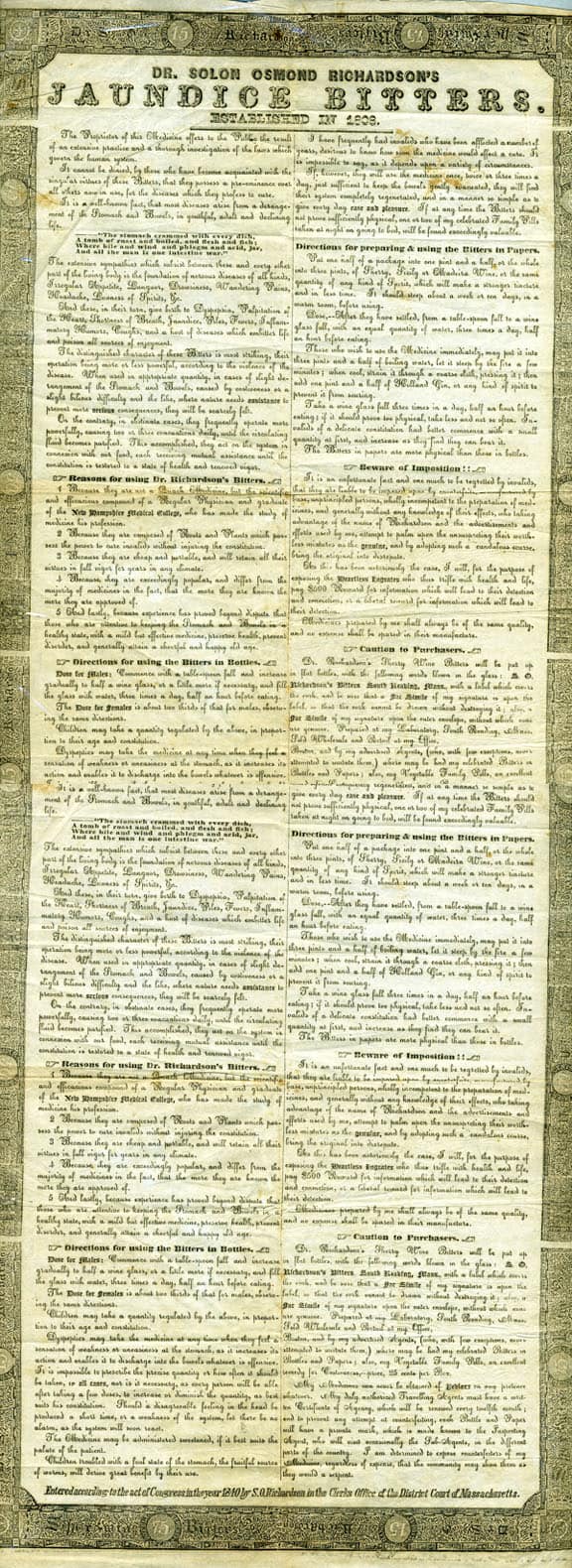
Rare 1840 Advertising Broadside for Dr Solon Richardson Jaundice Bitters Mass – Up for auction is a large 1840 printed Advertising Broadside promoting Dr Solon Osmond Richardson’s Jaundice Bitters of Mass. The Border is printed to look like a label from Dr Solon’s Bottle. It measures 9.75 x 14.75 inches and is in nice condition with creasing and a couple small light stains. The scanner could only pick up half in each scan – eBay March 2013

S.O. RICHARDSON’S BITTERS – Meyer Collection
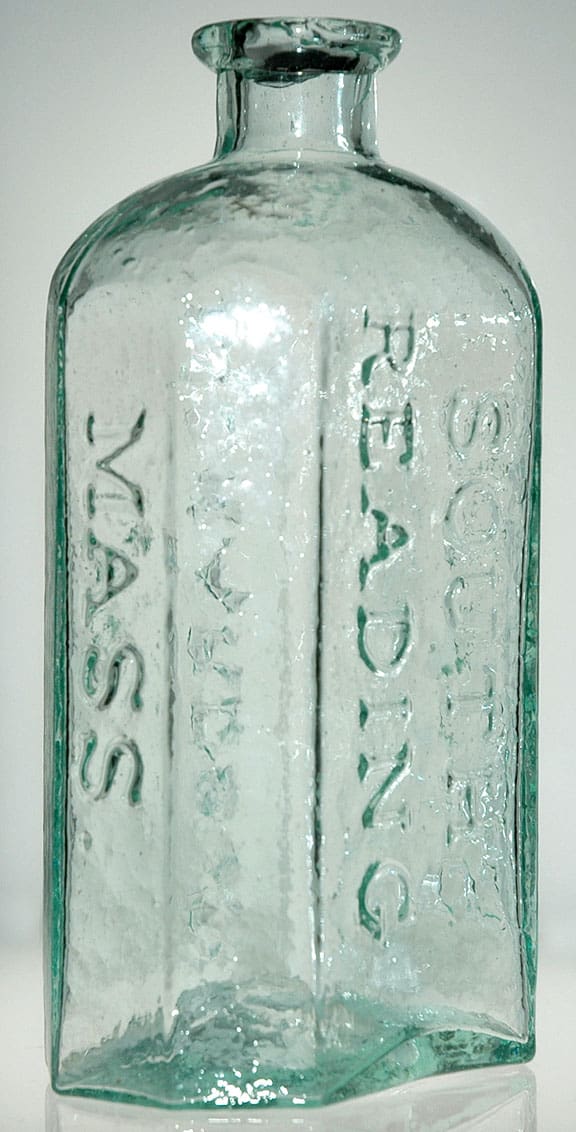
S.O. RICHARDSON’S BITTERS – Meyer Collection
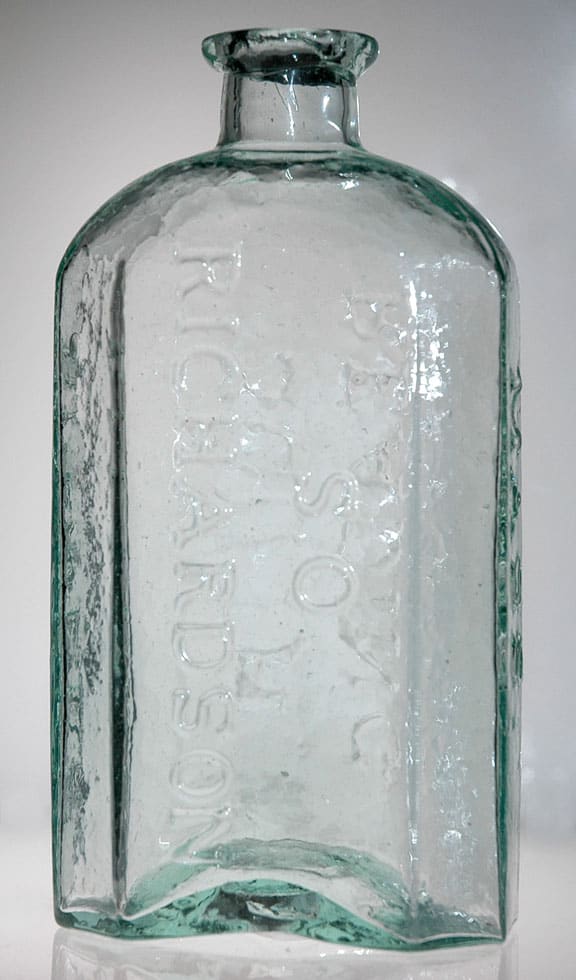
S.O. RICHARDSON’S BITTERS – Meyer Collection
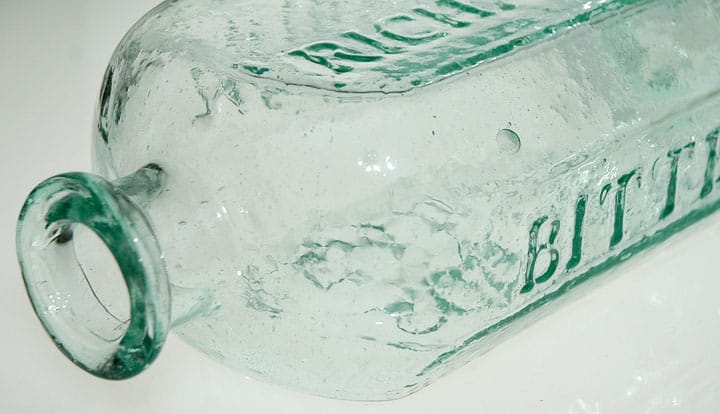
S.O. RICHARDSON’S BITTERS – Meyer Collection
![]() I’ve been getting kind of squirrelly recently with some of these XR bitters that have been popping up on eBay, on digs and at auction houses. Many are one-of-a-kind and of course extremely rare. Here is another that is in heated call-backs now with Glass Works Auctions. The Old Dr. C. W. Hufeland’s German Bitters from Philadelphia. I think it was at $7k earlier this evening. Wow. I feel compelled to do some quick research and store this information on the site. This bottle deserves some attention and respect.
I’ve been getting kind of squirrelly recently with some of these XR bitters that have been popping up on eBay, on digs and at auction houses. Many are one-of-a-kind and of course extremely rare. Here is another that is in heated call-backs now with Glass Works Auctions. The Old Dr. C. W. Hufeland’s German Bitters from Philadelphia. I think it was at $7k earlier this evening. Wow. I feel compelled to do some quick research and store this information on the site. This bottle deserves some attention and respect.


